 |
 |
 |
| |
Mortality Benefit From DAAs Most Likely With Advanced Fibrosis in Canada - Trends in cause-specific mortality in HIV-HCV co-infected patients in Canada (2003-2016): Early impact of HCV therapy
|
| |
| |
9th IAS Conference on HIV Science (IAS 2017), July 23-26, 2017, Paris
Mark Mascolini
All-cause mortality fell among HCV/HIV-coinfected people in Canada with widening use of HCV therapy, including direct-acting antivirals (DAAs), but mortality remains high in this group [1]. Canadian Co-infection Cohort (CCC) investigators determined that the mortality benefit with DAA therapy "will be concentrated among those with advanced fibrosis and efforts to expand treatment should prioritize this group."
Big drops in AIDS-related mortality after the arrival of combination antiretroviral therapy resulted in the growing importance of other death risks, including HCV infection. Because liver-related conditions account for about one quarter of deaths in HCV/HIV-coinfected people, widening use of DAA therapy over the past few years may affect death rates and causes of death in this population. Therefore CCC researchers set out to explore cause-specific mortality in coinfected people and to assess changes in cause-specific mortality before and after increased use of HCV therapy in this group.
The CCC includes 1695 HCV/HIV-coinfected people in care at 18 centers across 6 Canadian provinces--about 23% of coinfected people in the country. The researchers used the Coding of Cause of Death in HIV (CoDE) protocol to divide causes of death into five categories: end-stage liver disease (ESLD), smoking-related death, drug overdose, other, and unknown. They used Poisson regression stratified by time (April 2003 through December 2008 and January 2009 through July 2016) and age (20 to 49 and 50 or older). With a competing risks survival model, the investigators estimated cause-specific mortality hazard ratios for these groups. This model adjusted for detectable HIV load, CD4 count, aspartate aminotransferase-to-platelet index (APRI, a measure of fibrosis), and HCV RNA positivity.
The analysis focused on 1477 people with an available date of birth and follow-up in the study period (median 4.1 years). Most cohort members (80%) had a history of injection drug use (IDU), about 50% reported alcohol use, and more than 90% smoked when they entered the cohort. Most participants (84%) were taking antiretroviral therapy, 64% had an undetectable HIV load, and 81% had no HCV therapy experience at baseline. One fifth of the group had moderate or worse liver fibrosis (APRI greater than 1.5).
In 2003-2008 relatively few people received HCV therapy, and sustained virologic response (SVR) rates reached only 6% of HCV RNA-positive people 20 to 49 years old and 3% of those 50 or older. Most HCV treatment courses, 82%, occurred in 2009-2016, and SVR rates jumped to 22% in the younger group and to 23% in the older group. One third of all HCV treatment courses (35%) involved DAAs.
During follow-up 203 people (14%) died for a death rate of 30.5 per 1000 person-years. Median age at death stood at 47 years (interquartile range 43 to 54). People who died (1) were more likely to report active IDU and current smoking, (2) had a lower median CD4 count (319 versus 480), (3) were less likely to have an undetectable HIV load (65% versus 80%), (4) had HCV infection longer (21.5 versus 17.5 years), (5) were more likely to be HCV treatment naive at baseline (76% versus 58%), (6) had worse fibrosis (32% versus 19% with APRI above 1.5), and (7) were more likely to have a prior ESLD diagnosis (14% versus 4.1%).
While ESLD accounted for 20% of deaths, smoking explained 17% (through cardiovascular disease, lung or esophageal cancer, or pneumonia), drug overdose accounted for 16%, other causes explained 22% (infections, cancers, suicide or trauma, or AIDS), and unknown causes accounted for 25%.
Overall, death due to ESLD did not appear to wane over time, except in people 50 to 80 years old. Smoking-related deaths did drop over time but explained most deaths in the 50-to-80 group in 2009-2016. Deaths from overdose fell substantially over time in both the younger and older age groups but still accounted for the highest proportion of deaths in the 20-to-49-year group in the later study period.
Statistical analysis accounting for competing death risks found a significantly lower risk of death in 2009-2016 versus 2003-2008 from smoking (hazard ratio [HR] 0.41, 95% confidence interval [CI] 0.17 to 0.97) and overdose (HR 0.31, 95% CI 0.14 to 0.66). Risk of death from ESLD fell over time in this analysis (HR 0.65) but not significantly (95% CI 0.28 to 1.5).
ESLD deaths were about 5-fold more likely with an APRI above 1.5 and with HCV RNA positivity, and about 3-fold more likely with a CD4 count below 350. The all-cause death risk was higher in people positive for HCV RNA at the last visit. The researchers believe these findings suggest "that sicker and more unstable people aren't getting treated" for HCV.
For "ideal" patients (CD4 count above 350, HIV load below 50 copies, APRI below 1.5), death due to ESLD proved very unlikely regardless of age, even in people with positive HCV RNA. For people with well-controlled HIV but an APRI above 1.5, death due to ESLD was slightly more common than in the ideal group. In contrast, death due to ESLD was common and did not drop over time in people with poorly controlled HIV and HCV, especially in those with detectable HCV RNA.
Among all cohort members, death due to smoking-related causes fell substantially over time regardless of baseline characteristics, especially in older versus younger patients. Deaths due to overdose also dropped substantially over time regardless of baseline values, especially in younger versus older patients and in people with poorly controlled HIV and HCV. The latter finding suggests that "improved linkage and access to harm reduction services may be occurring concurrently with HIV and HCV treatment."
The researchers concluded that the "immediate impact of HCV therapy will be most profound among those with advanced liver fibrosis." They believe a mortality benefit will be unlikely over the short term for people at low risk of ESLD. Thus "targeting modifiable risk factors (substance abuse and tobacco smoking) will have the greatest impact" on mortality.
Reference
1. Kronfli K, Bhatnagar SR, Hull M, et al. Trends in cause-specific mortality in HIV-hepatitis C (HCV) co-infected patients in Canada (2003-2016): early impact of HCV therapy. 9th IAS Conference on HIV Science (IAS 2017), July 23-26, 2017, Paris. Abstract MOAB0302.
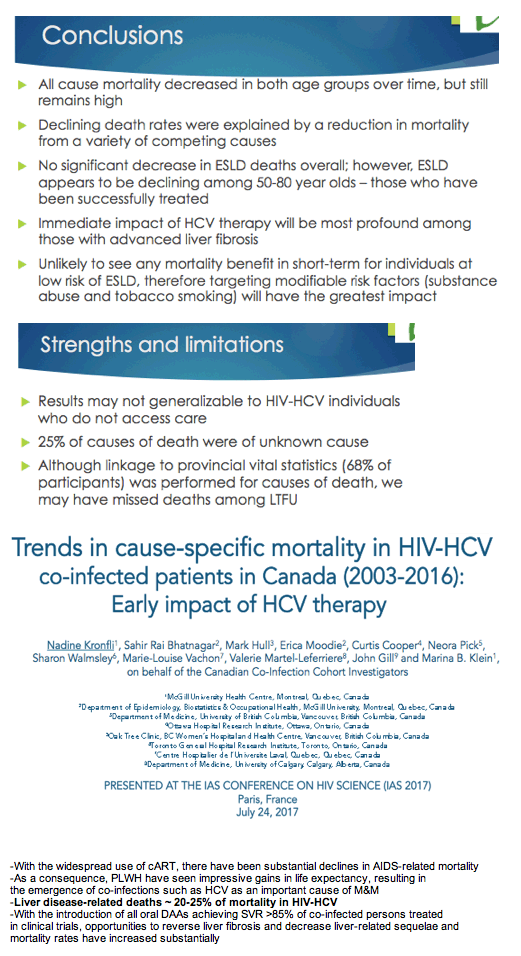
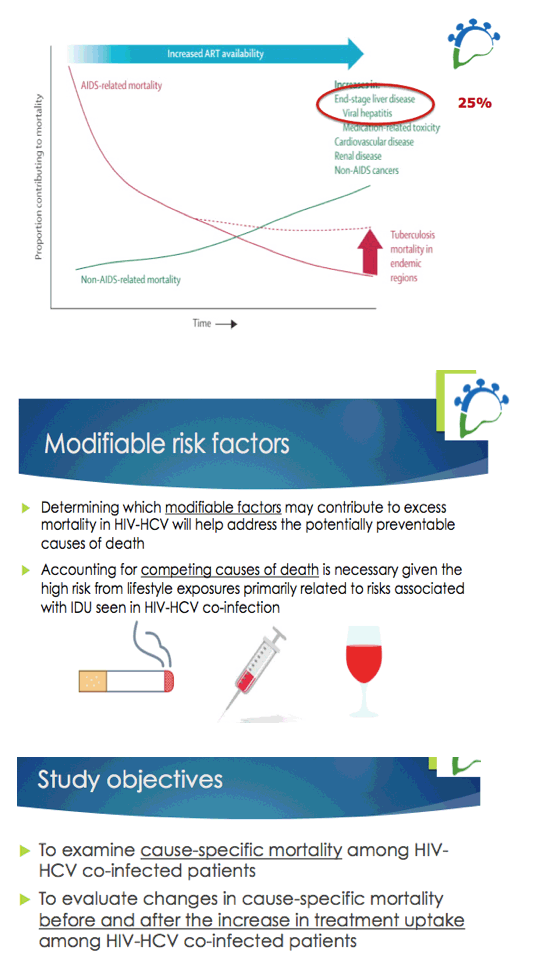
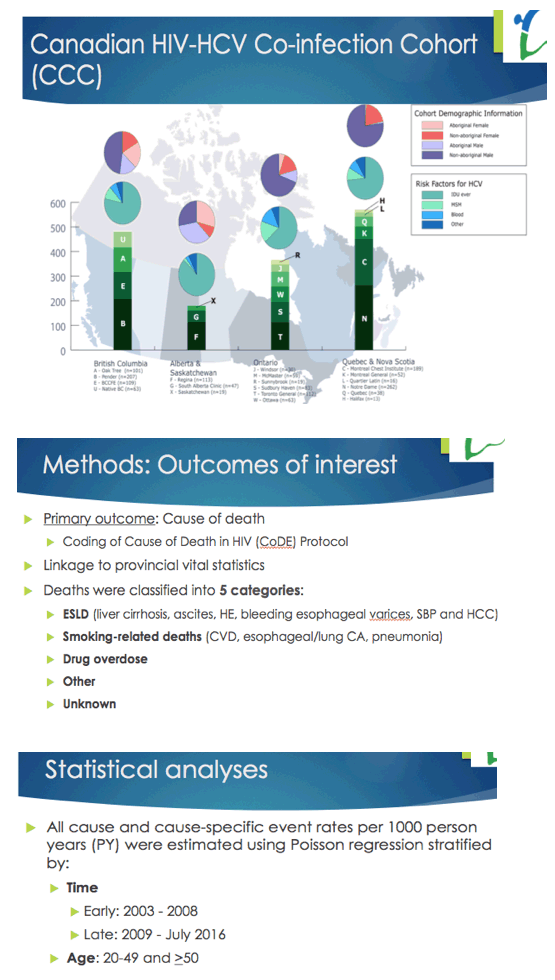
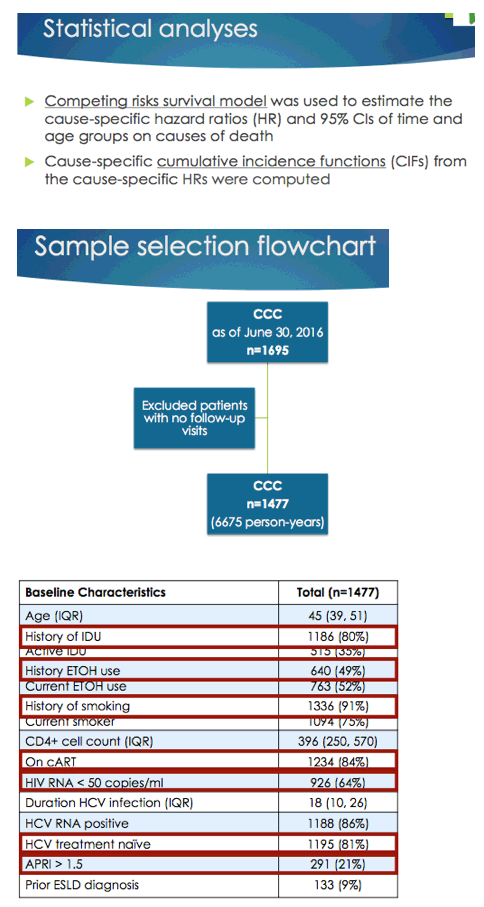
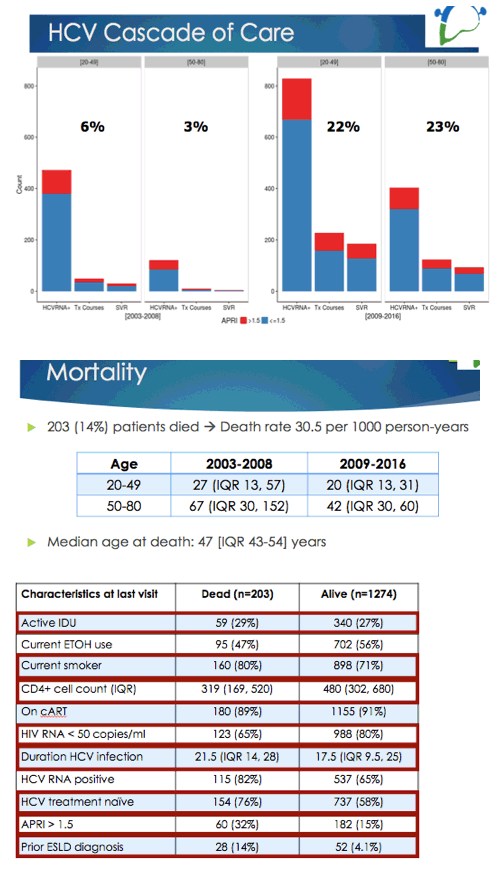
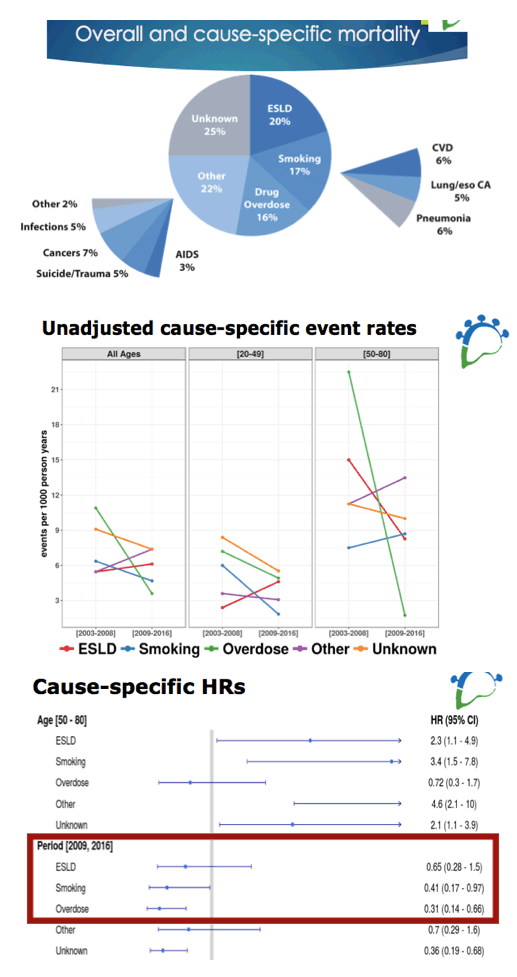
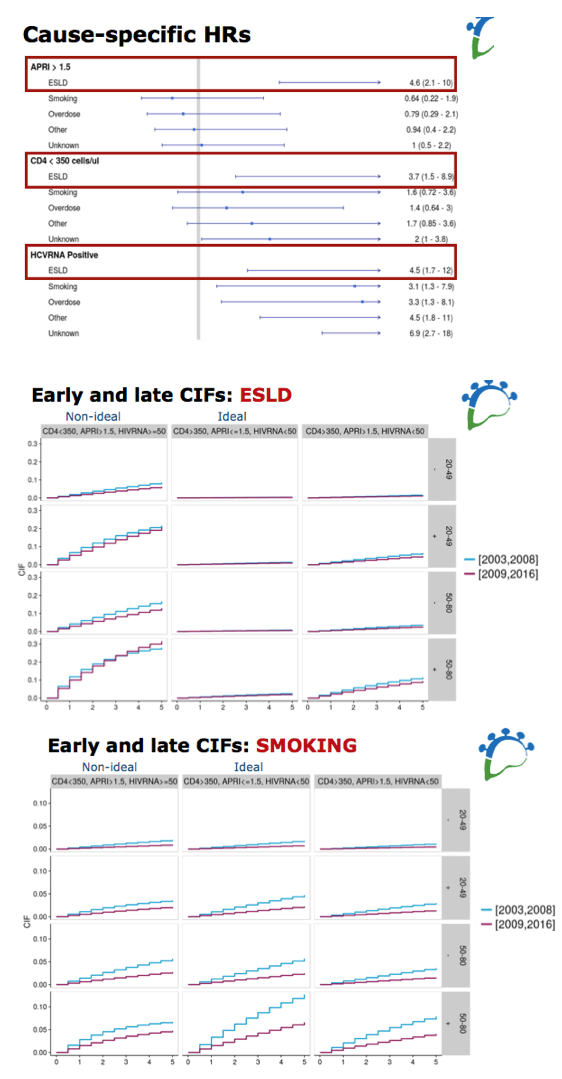
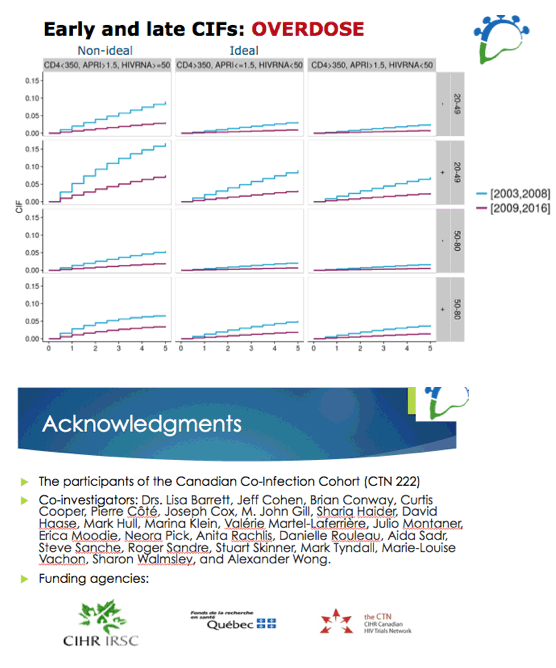
|
| |
|
 |
 |
|
|